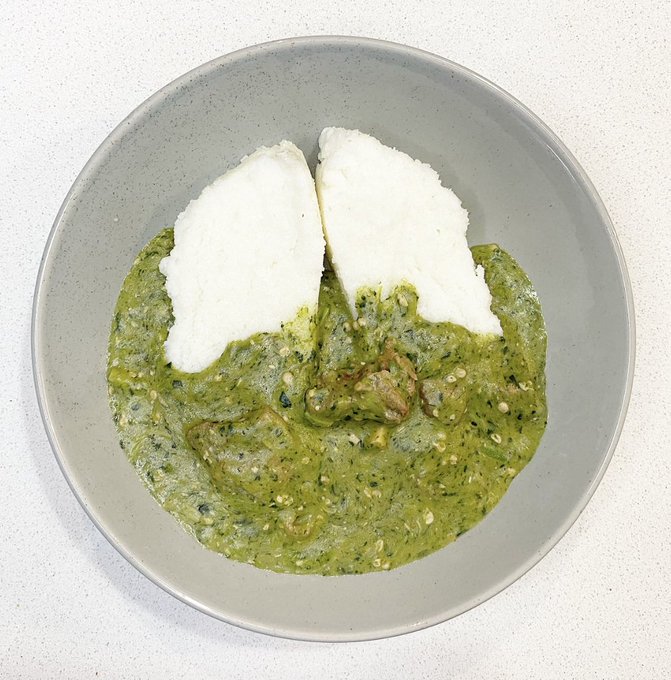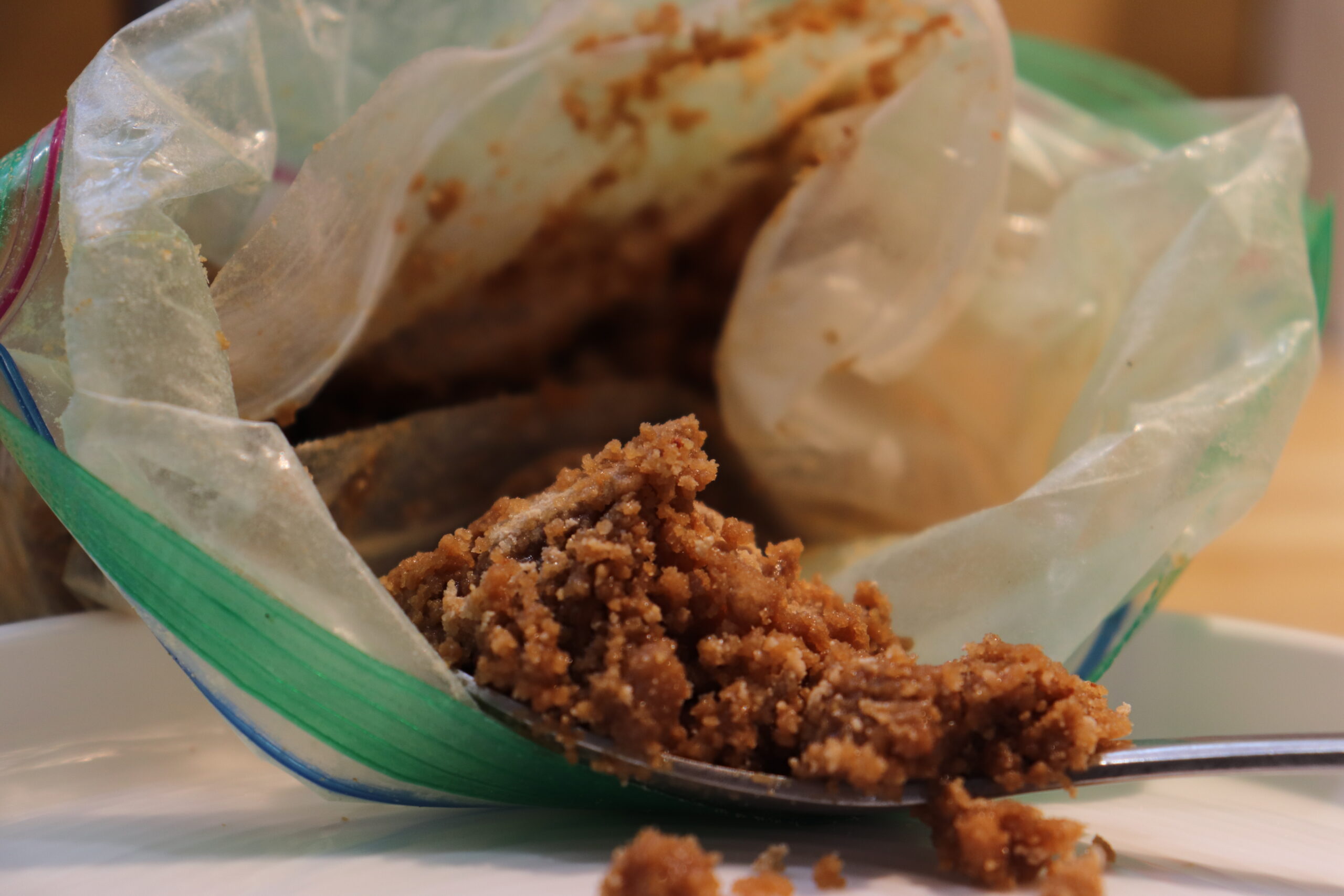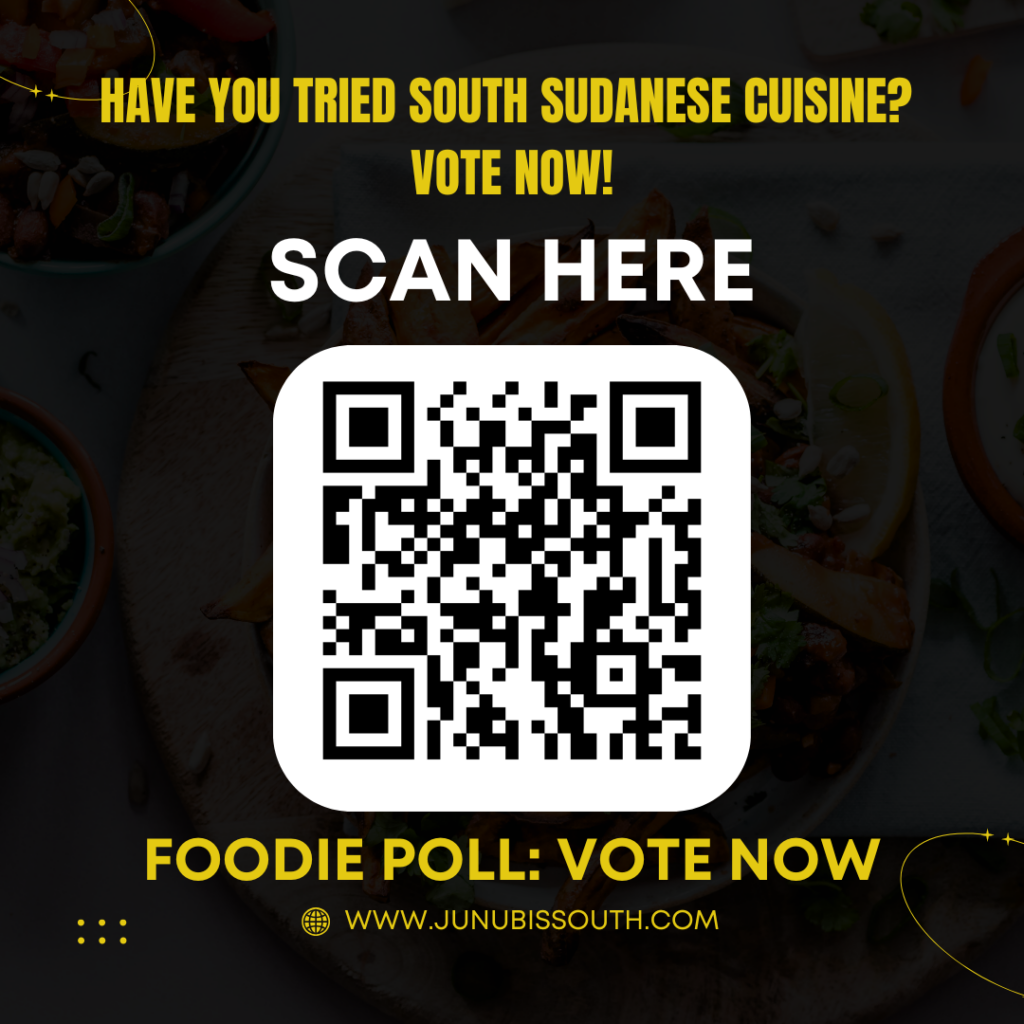The aroma of slow-cooked spices drifts through the air as a steaming plate of fasoulia—tender cannellini beans in rich tomato sauce—lands on the table. Nearby, a bowl of bamia tabeekh, a hearty okra and lamb stew, sits atop fragrant jasmine rice, its deep broth thickened by okra’s natural texture.
A crisp Sudanese salad adds balance, its mix of cucumber, tomato, onion and shredded romaine lightly dressed with salt, lemon and olive oil. The meal is thick and hearty, a blend of flavours and textures that nourishes the body and warms the spirit.
In South Sudanese culture, hospitality begins with tea and food. Before anything else, guests are served a cup of tea followed by a meal. Across Ottawa, these traditions remain, preserving an unspoken welcome rooted in generosity and community.

Preserving Culture Through Food
Gathered around the table, Kaidi Rial and her friend, Martha Kabashi, share stories of their childhoods in Sudan, intertwining memories with the flavours of home.
For many South Sudanese in Canada, food is one of the strongest connections to heritage and a way to preserve identity.
At Rial’s home in Gatineau, mulah kombo is the dish of the day. The term refers to a variety of stews made with kombo; a distinct alkaline salt derived from ash. Rial is preparing it with dried meat, okra and peanut butter, key ingredients in South Sudanese cooking.

Mulah Kombo with peanut butter, fresh okra and fresh beef, served with Assida
Traditionally, meat is sun-dried for several days, seasoned with salt and hung on a string to dehydrate or smoked over wood. In Canada, modifications are necessary.
“I put it in the oven at very low heat overnight,” Rial said. “I don’t want it to overcook, I just want it to dry out.”
Kombo, an essential element of the dish, speeds up cooking and enhances the green colour of vegetables. Rial brought hers from a recent trip to South Sudan. However, while Kombo is unique to South Sudanese cuisine, substitutes are available.
“Other Africans have similar salts and Asian and Filipino stores carry lye water, which works the same,” she said.
While cooking methods and ingredients shift depending on availability, the essence of South Sudanese cuisine remains unchanged. Decades of war and displacement have reshaped South Sudanese food traditions, but indigenous grains remain deeply tied to identity.
“Many South Sudanese have a strong moral attachment to sorghum and millet, often carrying seeds with them when forced to migrate,” said Dr. Luka Biong Deng Kuol, Dean of the School of Law at the University of Juba.
His 2020 study, South Sudan’s Changing Tastes: Conflict, Displacement and Food Imports, published by the Rift Valley Institute, explores how reliance on imported grains has reshaped food traditions.
Before the 1980s, South Sudan was largely self-sufficient in grain production but imported maize has since become widespread, particularly in urban markets.
“Although maize is now a staple, older generations associate it with weaker nourishment and a fading connection to home,” he said.
Despite these shifts, the preference for traditional grains remains strong. Many South Sudanese continue to seek out familiar flavours, keeping ancestral food practices alive, even in displacement.


South Sudanese Sundried Okra, best known as Waka
The Tradition of Unwritten Recipes
South Sudanese cooking is rooted in oral tradition, where recipes are passed down through practice and intuition rather than exact measurements.
“A recipe means you’re told the ingredients and the steps, but no one measures,” Rial said. “You add spices and ingredients as you need them.”
Her 10-year-old daughter, Malindi Dandara, watches closely as her mother prepares the dish, eager to help.
“What you can do is put the meat in the pot, Malindi,” Rial tells her.
“I just put it in?” she asks.
“Yes,” Rial nods.
“Can I have a piece of meat?” Dandara asks.
“No,” Rial responds, prompting laughter from around the room.
Kabashi, sitting nearby, chuckles. “That’s how we learn,” she said.
While some food customs evolve over generations, core traditions such as sharing meals and valuing hospitality remain deeply ingrained in South Sudanese households, regardless of where they are.
A Communal Experience
Meals are often shared from a large, round tray, featuring assorted dishes. A traditional South Sudanese spread includes stews, both vegetarian and meat-based served with salads, hot sauce on the side and staples like bread, assida, kisra or rice.
Kisra, a thin fermented sorghum bread and Assida is a thickened semolina-based porridge which are often paired with stews like mulukhia, a jute leaf stew and mulah kombo.
Food etiquette is deeply rooted in South Sudanese homes, from washing hands before meals and eating with the right hand to waiting until everyone is seated before beginning to eat.
“You can’t just eat and leave, you move your seat back and wait until everyone is done eating or until the eldest person at the table is finished,” Rial said.
In addition to dining etiquette, South Sudanese food traditions also dictate the order in which food is eaten.
“Meat is the last thing you eat, our parents used to say, ‘Meat is the prize for finishing your food.’ The vitamins are in the sauce, not the meat,” she said.
Though Rial no longer follows all these customs, she acknowledges that some habits remain ingrained.
“I still eat meat last, and I always eat with family and friends,” she said.
A Growing Presence in Ottawa
Precise data on the South Sudanese population in Ottawa is unavailable but broader statistics offer insight into their presence.
According to the 2021 Canadian Census, 17,490 people identified as Sudanese across Canada, with 8,975 residing in Ontario.
Many arrived in the 1980s and 1990s as refugees fleeing the Second Sudanese Civil War. Due to South Sudan’s independence in 2011, population data for South Sudanese Canadians is still categorized under broader Sudanese statistics, highlighting the need for more precise representation in research and policy discussions.
Unlike other immigrant communities that tend to settle in designated neighbourhoods, South Sudanese residents are dispersed throughout Ottawa.
“We live everywhere,” Rial said. “There isn’t one specific area where you’ll find us.”
This dispersion has made it challenging to establish visible community hubs, such as restaurants, cultural centres or specialized businesses.
As a result, South Sudanese entrepreneurship often remains informal, operating within tight-knit social circles rather than large-scale public ventures.
“While South Sudanese entrepreneurs often begin by serving their immediate circles, expanding beyond these networks remains a challenge,” Rial said. “When we start businesses, we do it for our immediate group of friends. We don’t expand outside our circles,”
However, with greater business education and community mobilization, the demand for South Sudanese cuisine presents a significant growth opportunity.
Would the city’s food lovers embrace it if more restaurants or food festivals featured these flavours? We want to hear from you. VOTE NOW!

Food as a Cultural Anchor
Decades of war forced millions of South Sudanese to rebuild their lives in unfamiliar places. Yet, wherever they settled, food remained their most powerful link to home
“We often borrow from other cultures when it comes to weddings and traditions but one thing that stays the same is our food,” said Kabashi. “We maintain this everywhere we go. Even if we eat injera, if kisra is available, we will always choose kisra.”
Injera is a spongy flatbread popular in Ethiopian and Eritrean cuisine and common in the diaspora, for many South Sudanese kisra remains the first choice, a familiar taste that bonds them to home.
Traditional South Sudanese dishes are rooted in staple grains like sorghum and millet, enriched with fresh vegetables, legumes and proteins such as goat, lamb, beef and fish; dried or fresh.
These dishes hold stories of survival, migration and belonging woven into every bite.
With community mobilization, business education and financial literacy, South Sudanese cuisine is poised to become a staple in Ottawa’s food scene and introducing more people to the tastes of a homeland that lives on in every dish.


uounf8